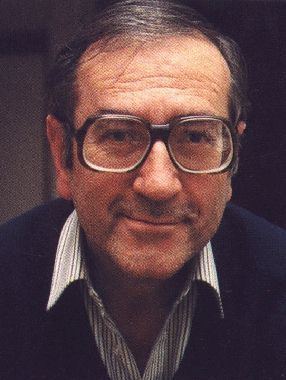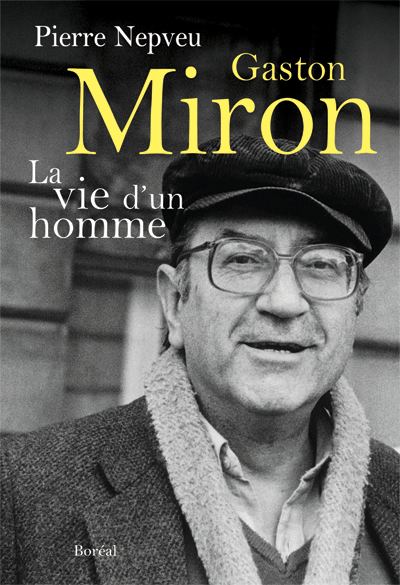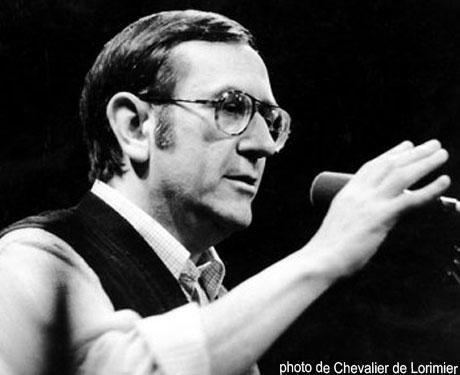Name Gaston Miron Role Poet | Parents Charles-Auguste Miron Books Counterpanes | |
 | ||
slowreading pix inside lsarahd babx gaston miron la marche l amour
Gaston Miron, OQ ([ɡastɔ̃ miˈʁɔ̃]; January 8, 1928 – December 14, 1996) was an important poet, writer, and editor of the Quebec Quiet Revolution. His masterpiece, L'homme rapaillé (partly translated as The March to Love: Selected Poems of Gaston Miron, whose title echoes Miron's most celebrated poem La marche à l'amour) has sold over 100 000 copies, in Quebec and overseas, ensuring Miron as one of the most widely read authors of Quebec literature. His commitment for a free and independent Quebec, both politically and through his writings, associated with his popularity, placed Miron as a central figure of the Quebec nationalist and independence movements.
Contents
- slowreading pix inside lsarahd babx gaston miron la marche l amour
- Babx gaston miron
- Life
- Works
- Honors
- Works on Gaston Miron
- References

Babx gaston miron
Life

Gaston Miron was born in Sainte-Agathe-des-Monts, in a country region (Laurentides) 100 kilometers north of Montreal. He moved in Montreal in 1947, at a time when Maurice Duplessis was reigning as Quebec premier. In 1953, with Olivier Marchand, Miron published his first work, Deux Sangs at Éditions de l'Hexagone, a publishing house they co-founded. Miron would become the main editor for this publishing house, the first entirely dedicated to Quebec poetry. The editorial line of l'Hexagone was to establish a "national literature" and put an end to the "poet's alienation" in the society of the time. The publications of the new publishing house, which rapidly signed young and innovative poets like Jean-Guy Pilon and Fernand Ouellette, announced a modern and creative poetry that were sustaining and prolonging the earlier efforts of Alain Grandbois, Paul-Marie Lapointe and Roland Giguère, all of whom would later joined the new publishing house.

Parallel to his editing work, Miron published several poems, notably his most renowned La Marche à l'amour, in various journals and newspapers, including Le Devoir, Liberté and Parti pris. Perhaps as importantly, he animated several artistic and political circles in cafés around "le carré St-Louis" where he lived. His flamboyant style and articulated speeches made him a popular figure in a then revitalizing Plateau Mont-Royal. This animation was soon followed by various texts, many of which focused on the status of the French language and on the Quebec political position. These texts, despite not being published at the time, would nonetheless be widely circulated thanks to Miron's importance in Montreal's intellectual scene. They contributed to the development of the Quiet Revolution. Miron's work was not known to the wider public until 1966, when Jacques Brault hosted an important conference at Université de Montréal which began as follows: "Qui parmi nous ne connaît pas Gaston Miron?" (Who among us does not know Gaston Miron?). In the late 1960s, Miron starred in several "nights of poetry" that attracted a large audience and made him a leading voice in Quebec poetry. In 1969, he became the father of his lone child, Emmanuelle.

Pressure started to weigh on Miron for him to recollect his fragmented works and publish it under one cover. Despite his worries that his work was not yet ready for publication, Miron gave in and published L'homme rapaillé in 1970. The book, which alternates between poems expressing lyrically a vivid vision of love and those embodying the alienated situation of the French-speaking Québécois, was an instant success and soon attracted many honors. The book was characterized by a highly lyrical style and drew as much in Québécois orality as in formal vocabulary.

Shortly after the publication of his book, Miron is arrested and put in jail without trial during the events of the October Crisis. This arrest solidified his commitment to politics and support for Quebec's political freedom. In 1975, he published his Courtepointes, which would later be integrated in L'homme rapaillé.

In December 1996 Miron died in Montreal. He became the first Quebec author to receive a state funeral.
The City of Montreal honored the memory of Gaston Miron by giving his name to the building that currently hosts the City's Arts Council offices. This neo-classical building is situated on Sherbrooke Street, facing Lafontaine Park, and hosted the City's main Public Library up to 2002.
